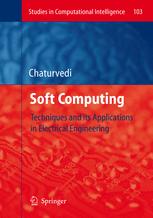

Most ebook files are in PDF format, so you can easily read them using various software such as Foxit Reader or directly on the Google Chrome browser.
Some ebook files are released by publishers in other formats such as .awz, .mobi, .epub, .fb2, etc. You may need to install specific software to read these formats on mobile/PC, such as Calibre.
Please read the tutorial at this link: https://ebookbell.com/faq
We offer FREE conversion to the popular formats you request; however, this may take some time. Therefore, right after payment, please email us, and we will try to provide the service as quickly as possible.
For some exceptional file formats or broken links (if any), please refrain from opening any disputes. Instead, email us first, and we will try to assist within a maximum of 6 hours.
EbookBell Team

4.1
30 reviewsTaking inspiration from the brain structure (neurons), linguistic rather than precise way of description by humans (not so cold, very warm), genetics and the behaviour of birds and ants in the nature, new techniques for the solution of various problems have been developed over the past three decades or so. All these techniques are broadly classified as artificial intelligence or computational intelligence.
Artificial intelligence encompasses methods like artificial neural networks and fuzzy logic. Computational intelligence includes optimization methods such as genetic algorithm, evolutionary algorithm, arts colony, particle swarm optimization, etc. and their variations. Feasibility of the application of these techniques in various control and optimization problems has been investigated extensively and these techniques have been applied to physical systems in a number of cases.
With the computational power now available, importance of this relatively new branch of knowledge, that is heavily dependent on soft computing, will grow significantly in the future. The appearance of a book like this one helps spread awareness about the new techniques based on soft computing and is thus a welcome addition.
In this book a cross-section of these techniques is introduced and their applications illustrated by examples from physical systems based on the author’s own research. It will provide a good introduction to a reader interested in this subject.
Om P. Malik, Professor Emeritus, University of Calgary